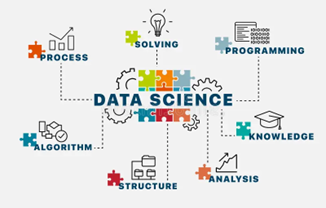What is K-12 Data Science?

K-12 data science teaches children from kindergarten through high school about data science concepts, which include data collection, analysis, interpretation, and visualization using age-appropriate methods. This includes foundational statistical concepts, basic programming skills, and ethical considerations. By this way they get to explore real data and try out different ways of understanding it, which helps them learn even more.
By learning about data from an early age, K-12 data science helps kids become smarter and more responsible citizens who can use data to make good decisions and make the world a better place and by promoting critical thinking and problem-solving abilities, K-12 data science prepares students for future studies and careers in fields like data science, statistics, and computer science.
By learning about data from an early age, K-12 data science helps kids become smarter and more responsible citizens who can use data to make good decisions and make the world a better place and by promoting critical thinking and problem-solving abilities, K-12 data science prepares students for future studies and careers in fields like data science, statistics, and computer science.
The emergence of k-12 data science.

Why there is a need for k-12 data science?
In today's world flooded with information, it's super important to teach kids how to understand it correctly. Rethinking K-12 math education is imperative; traditional syllabus often overlook essential data science skills. Rather than outdated pen-and-paper methods, students should learn to identify real-world problems, develop models, leverage computational tools for analysis, and critically evaluate results.
In today's world flooded with information, it's super important to teach kids how to understand it correctly. Rethinking K-12 math education is imperative; traditional syllabus often overlook essential data science skills. Rather than outdated pen-and-paper methods, students should learn to identify real-world problems, develop models, leverage computational tools for analysis, and critically evaluate results.
Drawing attention to practical data skills furnishes students for the challenges of a data-driven world.
How K-12 Data Science can be implemented?
To implement k-12 data science in any country we have to follow these ways:
How K-12 Data Science can be implemented?
To implement k-12 data science in any country we have to follow these ways:
1.Introduction of New Policy: Government or educational authorities will have to develop policies and procedures for integrating data science into k-12 education.
2.Infrastructure: To start using data in schools, we need to set up computers, software, and networks to collect, store, and study information about students. This might mean buying new equipment and programs to make sure data is safe and easy to access.
3.Training: Teachers and school leaders need to learn how to use data to make decisions and teach better. This involves giving them training and chances to improve their skills in understanding and using data effectively.
4.Data Collection: We must collect relevant data on students, including academic performance, attendance, behavior, and other factors that may impact learning outcomes.
5.Data Analysis: We need to use the data analysis techniques and tools to examine the collected data and identify patterns and trends. This may involve using statistical methods, machine learning algorithms, and data visualization techniques.
6.Privacy and Security: We must create rules and ways to keep students’ information safe. This involves following laws about privacy and making sure only the right people can see and use the data, so it doesn’t get into the wrong hands or used the wrong way.
7.Evaluation and Iteration: We must keep watching how using data in schools affects students and change our plants if need. This means checking if students are doing better and making changes to our methods to help them learn even more.
Data Literacy Education:
Foundations of Data Science:
Computational thinking and coding:
Ethical considerations:
Real world applications:
Our Office
GREER
South Carolina, 29650,
United States
South Carolina, 29650,
United States


